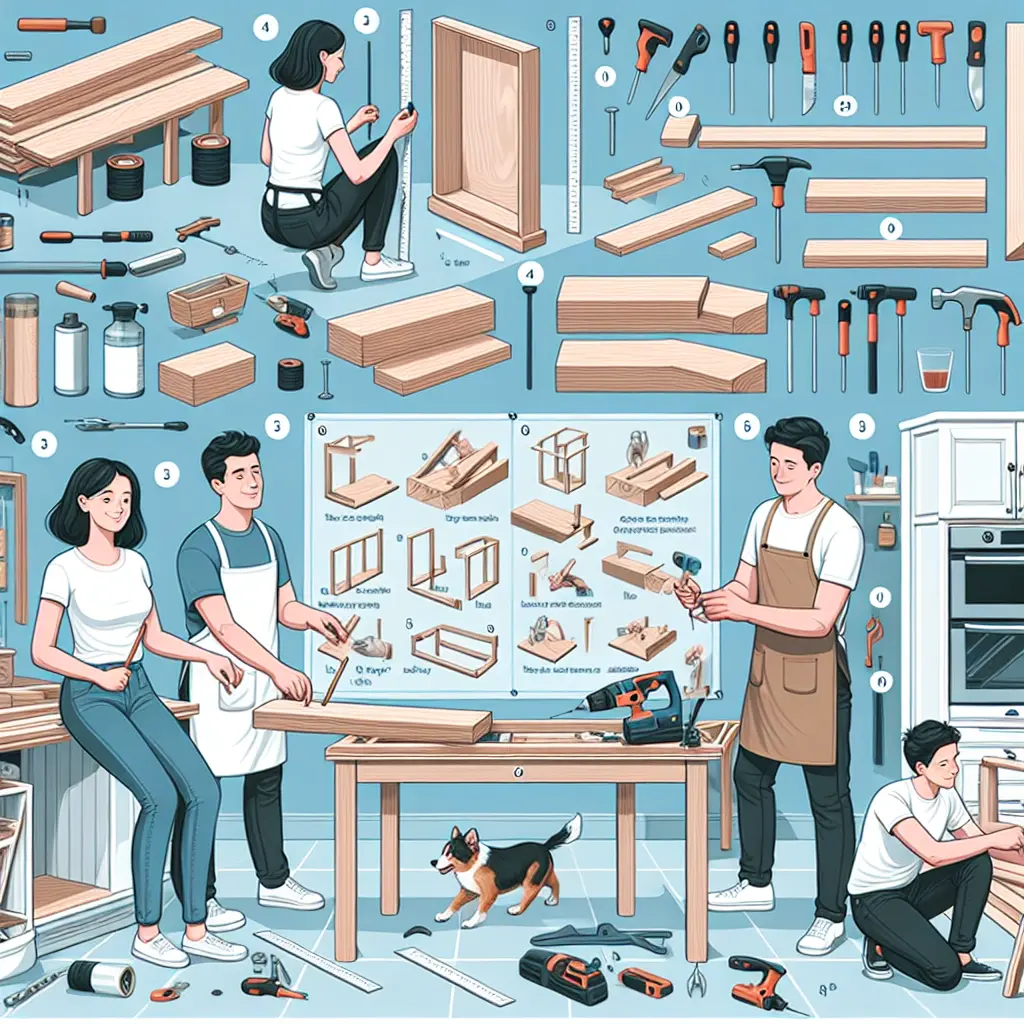
Building your own furniture is a rewarding venture that combines creativity, skill, and the satisfaction of having a personalized piece at home. Whether you’re an enthusiast of DIY furniture or a beginner in woodworking, this guide will walk you through the process of building furniture, integrating the latest trends and tools in the DIY community.
Understanding the Basics of Furniture Design DIY
Before diving into your woodworking projects, it’s crucial to grasp some basic furniture design principles. DIY furniture is not just about hammering boards together; it involves thoughtful design to create pieces that are both functional and aesthetic. Start by sketching out your ideas or using furniture design software to visualize your plans. This preliminary step is essential in custom furniture creation, ensuring that the piece will fit well in the intended space and serve its purpose.
Step-by-Step Furniture Building: From Planning to Polishing
1. Planning Your Project
Every successful project in furniture making starts with a solid plan. Determine the type of furniture you need, the space it will occupy, and the style that best suits your home decor. For beginner woodworking, simple projects like a wooden bench or a basic shelf are ideal as they require fewer tools and materials.
2. Selecting the Right Materials
Choosing the right wood is crucial for your homemade furniture. Some popular choices include pine, cedar, and oak, each offering different aesthetics and durability. Consider the environment where the furniture will be used — for instance, hardwoods like teak or mahogany are better suited for outdoor pieces due to their resistance to weather conditions.
3. Cutting and Assembling
With your design in place and materials at hand, begin by cutting your wood according to the measurements. Tools like the Dremel rotary tool kit, recently discounted during Prime Day sales, can be incredibly efficient for precise cuts and detailed work (Source). Assemble the pieces using nails, screws, or joinery techniques depending on the complexity and intended use of the furniture.
4. Sanding and Finishing
Sanding is critical for a smooth finish. Start with a coarse sandpaper and gradually move to finer grits. Once smooth, finish your piece with a sealant or paint that enhances the wood's natural beauty and protects it from environmental factors.
Integrating Modern DIY Trends and Tools
The world of DIY is continually evolving, with new tools and techniques emerging regularly. For instance, the rise of open source hardware certifications as seen in June 2024 (Source) showcases a trend towards transparency and community sharing in hardware development, which can be invaluable for DIY furniture makers looking for unique parts or ideas.
Leveraging Advanced Tools and Kits
For those looking to simplify complex processes in furniture making, various kits and tools can help. The Dremel rotary tool kit is a prime example, offering versatility for multiple woodworking projects with its range of attachments (Source). Additionally, innovations like the KOMBU Fermenstation have revolutionized how individuals approach DIY projects by simplifying complex processes (Source).
Inspiration from Unlikely Sources
Sometimes, inspiration for DIY furniture can come from the most unexpected places. For instance, learning about how YouTubers transform cars into bubble machines or how makers build technology for storm chasing can spark innovative ideas for functional yet creative furniture designs (Source1, Source2). These stories not only provide technical insights but also encourage thinking outside the box in custom furniture creation.
Community and Learning
The DIY community is vast and full of resources for beginners and experienced makers alike. Engaging with community forums, participating in workshops, or even following online tutorials can significantly enhance your skills in wood crafting techniques.
Conclusion: Bringing Your Furniture to Life
Building your own furniture is more than just a project; it’s a journey of creativity and skill-building. By following this step-by-step guide and integrating modern tools and trends, you can create not just furniture, but pieces of art that reflect personal style and functionality.
Thank you for joining me on this woodworking adventure. May your hands be steady, your cuts precise, and your creativity boundless. Happy crafting!
Abigail Wilcox